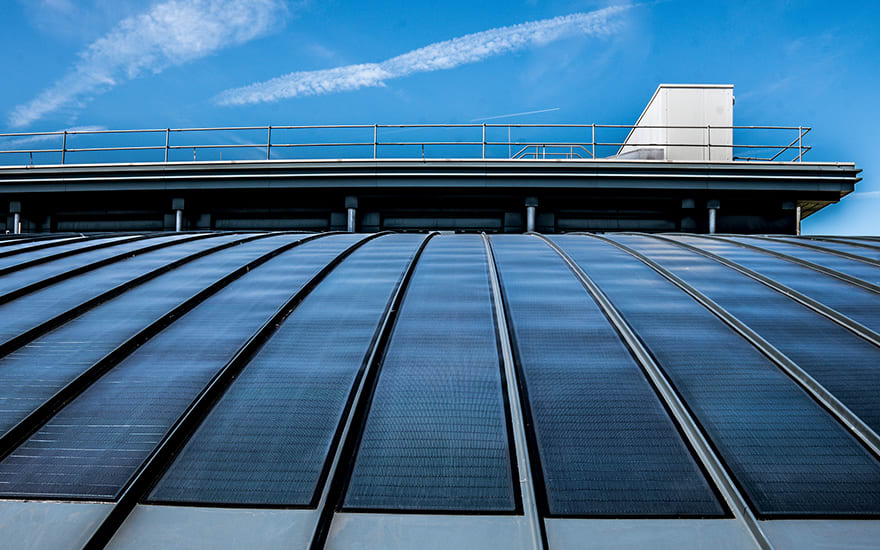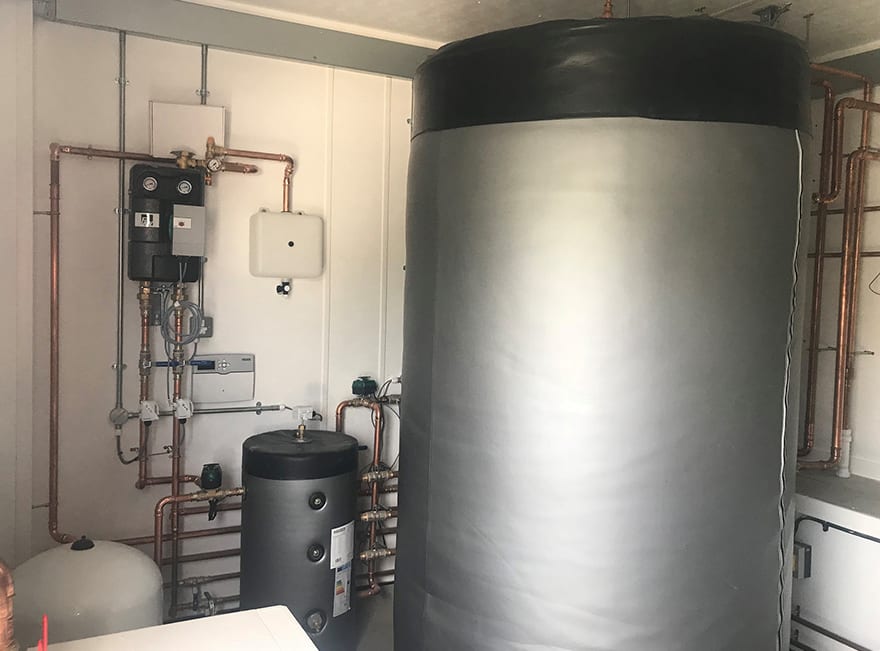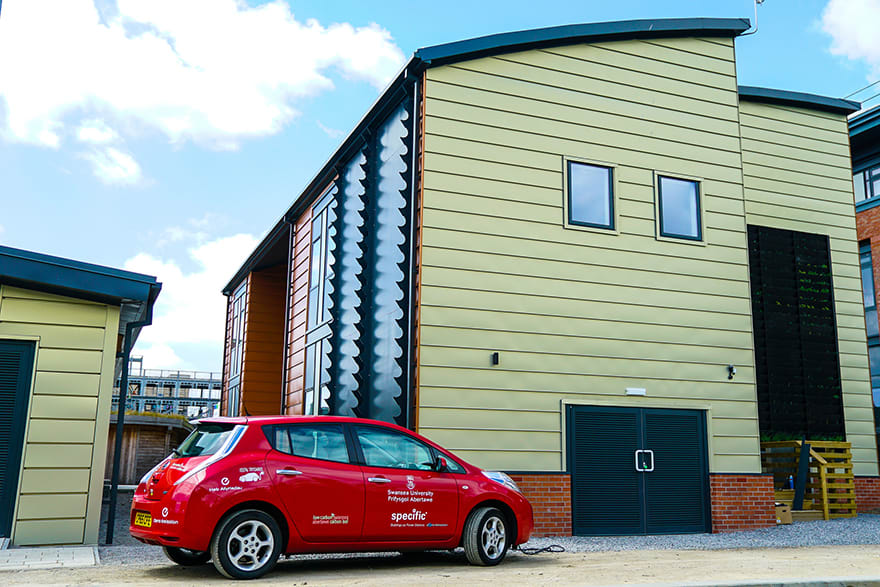The UK’s first energy positive office, opened at Swansea University today, integrates a range of commercially available technologies to generate, store and release solar power.
The two-storey Active Office demonstrator, on Bay Campus, was built by SPECIFIC, an academic/industry consortium led by Swansea University and partners Tata Steel, BASF, Akzo Nobel and NSG Pilkington.
The 400 sq m block can accommodate 25 people and features a curved roof with laminated photovoltaic cells able to generate 22kW of power at peak output.
A combined photovoltaic/thermal system on the south facing wall generates both heat and electricity.
All electricity is stored in 100kWh capacity lithium ion batteries, with roughly 10 times the capacity of a regular home battery. Heat is stored in a 2,000-litre water storage tank and dispersed throughout the building via air handling units.

A curved roof with laminated photovoltaic cells can generate 22kW of power
The office is designed to be energy positive over an annual cycle, said Joanna Clarke, building integration manager at SPECIFIC: “In winter months it will take power from the grid, but there will be a surplus of energy generated in the summer. The energy stores make it possible to ‘time shift’ heat and electricity demand, if for example more power is needed from the grid, we can take it at times when there is less stress on the grid. We can also feed into the grid at peak times to ease pressure.”
Innovative smart controls enable the building to predict demand and optimise efficiency. For example, data on levels of occupancy and weather data, taken from environmental sensors installed in the building fabric, enable it to predict heating requirements and “pre-charge” the hot water storage tank during the night.
The Active Office is the second example of the “Buildings as power stations” concept pioneered by SPECIFIC. The Active Classroom, completed in 2016, was the UK’s first energy-positive classroom, which generated more than one and half times the energy it consumed during the first year of operation.

Heat is stored in a 2,000-litre water storage tank
The two buildings will now be linked to share energy, as well as charge electric vehicles, to demonstrate how the concept could be applied to create an energy-resilient solar-powered community.
The Active Office received £800,000 of funding from Innovate UK with the requirement that the building has a repeatable design using only technologies that are commercially available today.
A modular construction system, developed and constructed by contractor Wernick Buildings, helped the project meet the tight eight-month schedule between initial design and handover.
Post-occupancy monitoring will check that designed performance is achieved in actual use, said Clarke. “We have lots of sensors and monitoring equipment installed in the building, our analysts will work though the data on energy generation and consumption, and hopefully feed the results back into the system to further optimise performance,” she concluded.

The Active Office will linked to the Active Classroom to share energy and charge electric vehicles
The energy stores make it possible to ‘time shift’ heat and electricity demand, if for example more power is needed from the grid, we can take it at times when there is less stress on the grid. We can also feed into the grid at peak times to ease pressure.– Joanna Clarke, building integration manager, SPECIFIC













